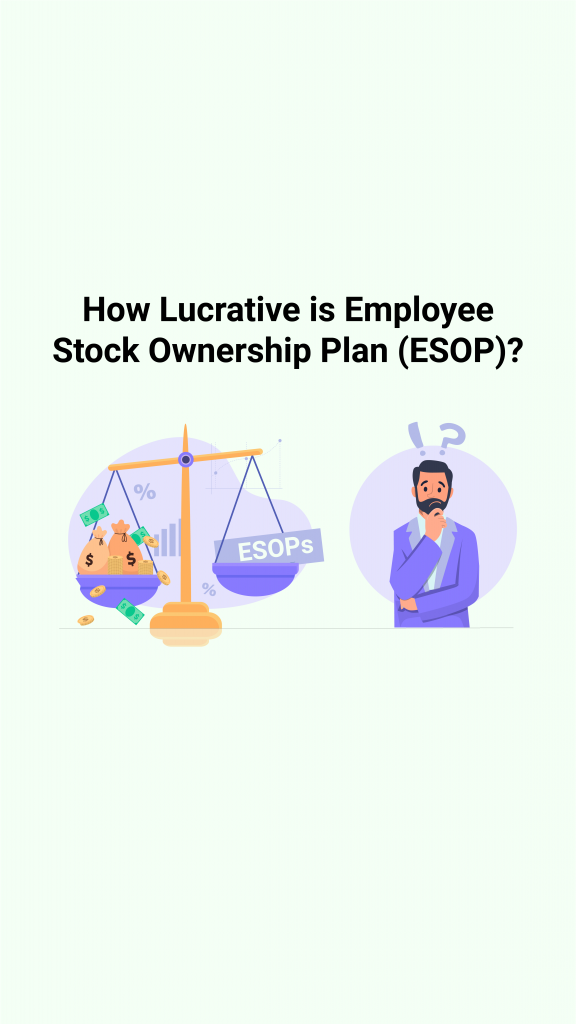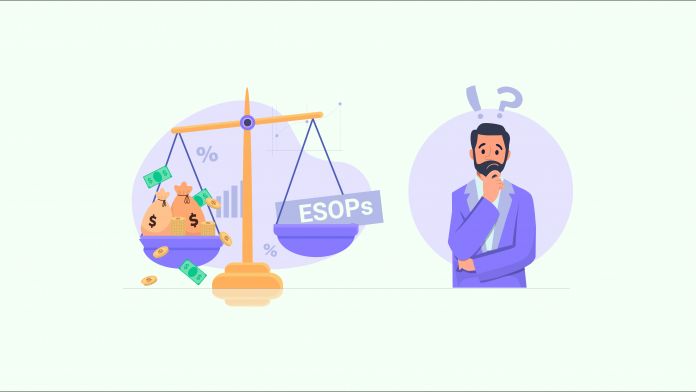India is currently at a juncture where its start-ups are venturing into IPOs and expanding. This expansion is not benefitting its owners and investors but also its employees. This is happening through Employee Stock Ownership Plan or ESOP. Compared to earlier times, when employees would rather reject getting ESOP from their employers upon joining, employees nowadays specifically ask for the employer’s ESOP plans. Stories similar to Google employees abroad getting rich through ESOP are now coming true closer to home too, with PayTM, Flipkart employees hitting jackpot via ESOP. With more startups like Zomato and Byju venturing into Employee Stock Ownership Plan, let’s take a closer look at what the hype is about!
Table of Contents
What is Employee Stock Ownership Plan(ESOP)?
Employee Stock Ownership Plan is not equal to company stocks. ESOP is rather an option for the employee to own or purchase his employer company’s stocks. Since this is just an option, the employee does not become company shareholder until he exercises this option.
ESOP is a valid and legal structure which requires proper registration from the company. Additionally, it also has to be shown on the company’s balance sheet.
Why do companies offer Employee Stock Ownership Plan?
A company can have multiple reasons for offering its employees ESOP. Firstly, it could be the company’s employee retention strategy thus making it difficult for employees to leave the firm. Secondly, it could be for employee performance or bonus to encourage its employees to work harder. Thirdly, it could be to make the employee feel more united with the company as holding its shares would give him a sense of ownership in the company. Lastly, it could be that the company cannot afford to pay the employee his full salary, hence they give ESOP to augment their salary.
Process of receiving and acquiring ESOP from company
If a company offers its employee ESOP, then it will go through the following procees:
1. Grant Letter
At the timing of joining, the company will give the employee a grant letter. This grant letter will outline following details:
Number of ESOP
The number of ESOPs the employee will receive. For example, if number of ESOPs is 80 then employee will get 80 shares in the company, as per the terms and conditions mentioned in the grant letter.
Exercise Value
The exercise price for the employee. Whenever a Private Limited Company is formed, its shares get a value called Face Value. It is the initial value of a share of the company. Then there is Fair Market Value which is the market price of the share at the time of employee acquiring the share.
Now, the exercise price is the price at which the employee can buy the company stocks. By default, it is generally the same as the face value of the company initially but can increase as the company grows and becomes more profitable. This is because as time passes, the risk of being the company decreases hence the exercise value progressively increases. Moreover, the exercise price is usually equal to the last round of share price.
In general, Face Value of stock will be less than or equal to the Exercise Price, and Exercise Price will be less than Fair Market Value. Hence, all three values are in most cases different from each other.
ESOP Cliff
The employee cannot immediately get the company shares as soon as he receives the grant letter. There is a minimum duration for which the employee has to work for the company to be eligible for the ESOP. This duration is called Cliff and it is generally for about a year.
Vesting Schedule
Vesting schedule is the total period and frequency at which the company will give the shares to the employee. It can either be all at once or once every month/quarter/year and over a number of years. Thus, vesting schedule is in the hands of the company and differs from company to company.
For example, if vesting schedule is 4 years, then in the first year employee will get nothing due to ESOP Cliff. Then after one year, employee can get 20 shares. And at the end of every quarter, employee can get 5 shares each over the next three years. Therefore, within 4 years the employee will receive the total of 80 shares as promised in the grant letter. However, if employee leaves the company after 2 years, then he will only get 40 shares and the remaining 40 shares will lapse upon his resignation.
Exercise Period
Exercise period is the duration after which the ESOP will lapse as soon as employee leaves the company. Thus, the employee needs to buy the shares at exercise price within said duration and convert the ESOP into shares. Else the exercise price will no longer be valid for him. Here, if employee wants to exercise then he has to pay tax for the stocks. This exercise period depends on the company as well and it extremely crucial for employee to read this fine print and be aware of it.
2. Exercise of ESOP
ESOP just stands for the option of buying company stocks. When the employee exercises this option, then he actually receives the stocks. Exercise means that once vesting is over, the employee can ask the company to give him the number of shares at the exercise value mentioned in his grant letter. Thus, the employee will officially become a company shareholder. This is known as the Exercise of ESOP.

How does ESOP convert into money?
Once the shares are acquired through the ESOP by the employee, he has the option to convert them into cash in many ways. If the company is listed in the stock market, employee can sell the shares in the stock market and get cash for it in their bank account instantly.
However, if the company is unlisted in the stock market, which is usually the case for startups, then employee can make money in the following ways:
- Once company takes out its IPO and gets listed on stock market, employee can sell his shares and get money.
- If company gets acquired by a third party, then they can buy out and liquidate the small shareholders. In this case, employee will again get money against his shares.
- Otherwise, the acquiring company can also swipe their own shares for the acquired company shared for the employee.
- The company can itself opt to buy back the employees shares for multiple reasons. Thus, employee again gets the cash.
- Employee also has the option to sell his shares secondarily if there’s an interested buyer, even before the shares go to the stock market.
Taxation on ESOP
Taxation on ESOP occurs in two events:
- When the employee Exercises ESOP – Employee has to pay tax as soon as he exercises ESOP. The taxable amount will be the difference between the Exercise Value and Fair Market Value at the time of exercise, which will then be added to employee’s salary and will be taxable as per tax slab rate. Thus, it is recommended to exercise ESOP only when one has the liquidity and to ask for a longer exercise period.
- When the employee sells shares – When employee sells the shares, he has to pay capital gain tax on it. Capital gain tax will be applicable on the amount difference between the share selling price and the Fair Market Value at the time of exercise.
ESOP Pool – How does the company prepare for it?
- The company firstly has to create an ESOP plan which will detail things such as the cliff, vesting schedule and exercise window.
- Once plan is done, ESOP pool appears on the cap table showing the number of shares reserved specifically for ESOP.
- Next, company needs to define the reasons for offering ESOP to employees.
- After the reasons are defined, company can start making grant letters with terms and conditions for ESOP for specific employees. The grant letter will mention details as given earlier.
- Finally, when an employee exercises ESOP, then company needs to collect cheque against it from them for the strike price. At the next shareholding revision, names of such employees and their shares have to be mentioned in the cap table.
If ESOP was not made earlier, then it can also be made later in the company’s journey. But then current shareholders will get diluted to create space for ESOP.
Watch more in the video below.
Join the LLA telegram group for frequent updates and documents.
Download the telegram group and search ‘Labour Law Advisor’ or follow the link – t.me/JoinLLA
It’s FREE!



